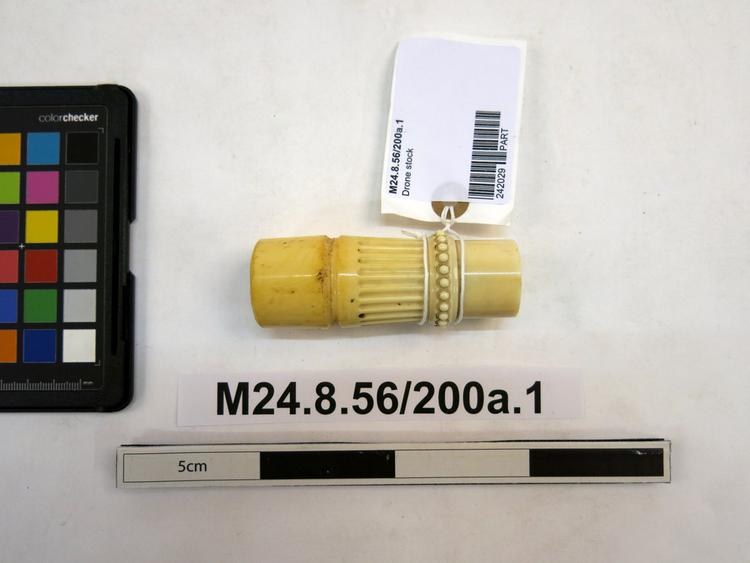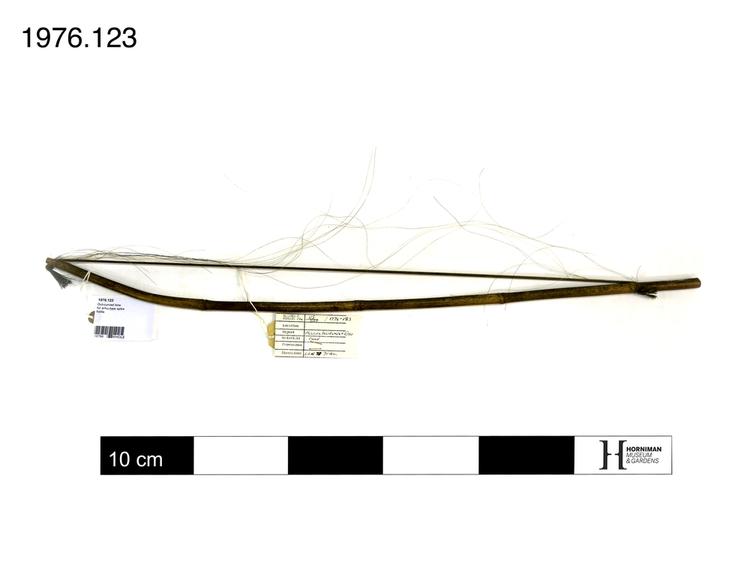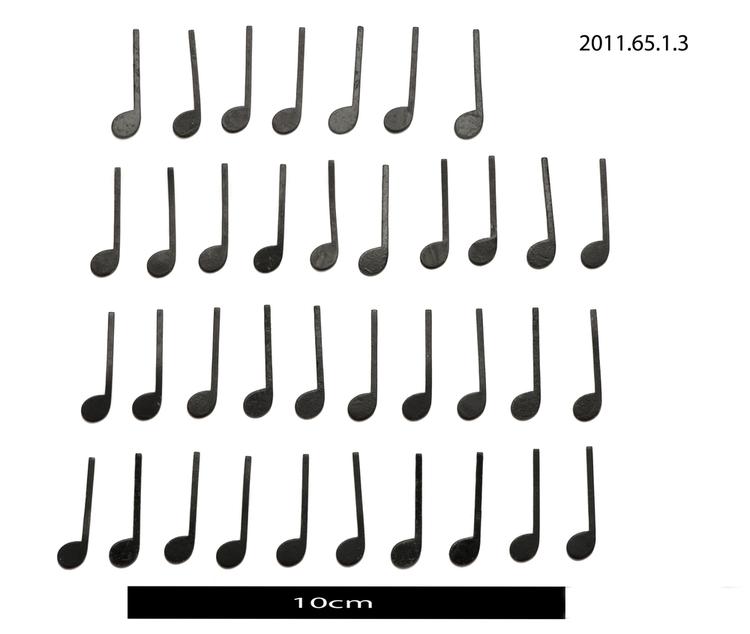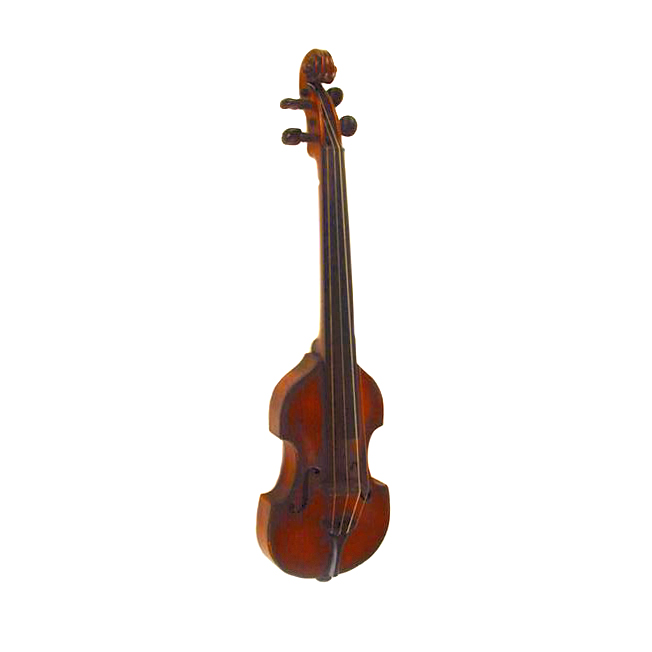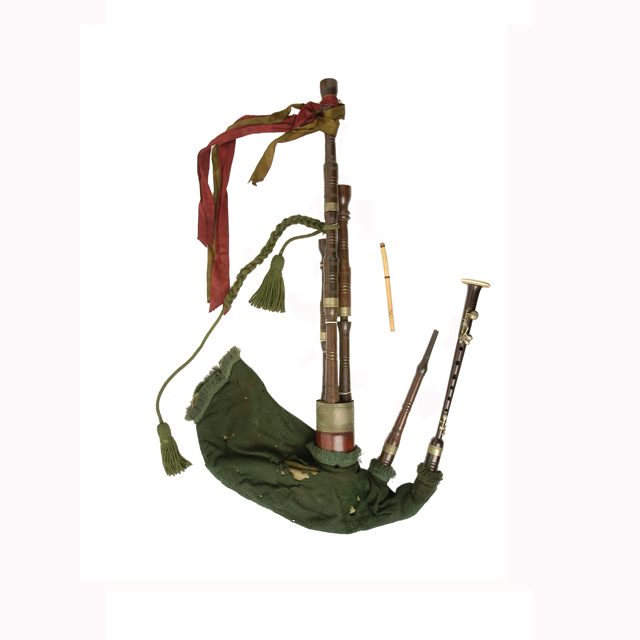
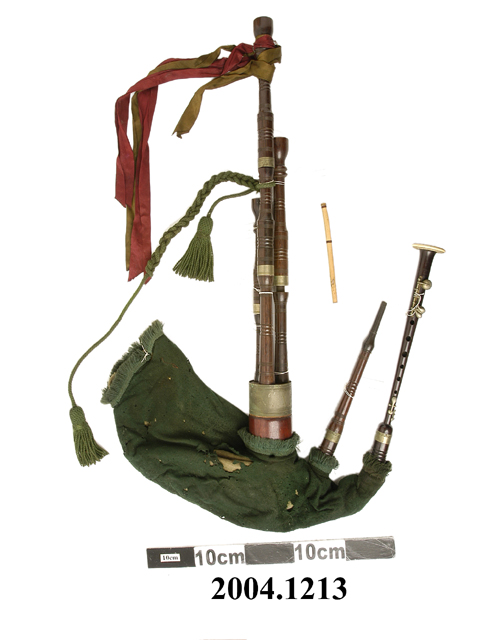
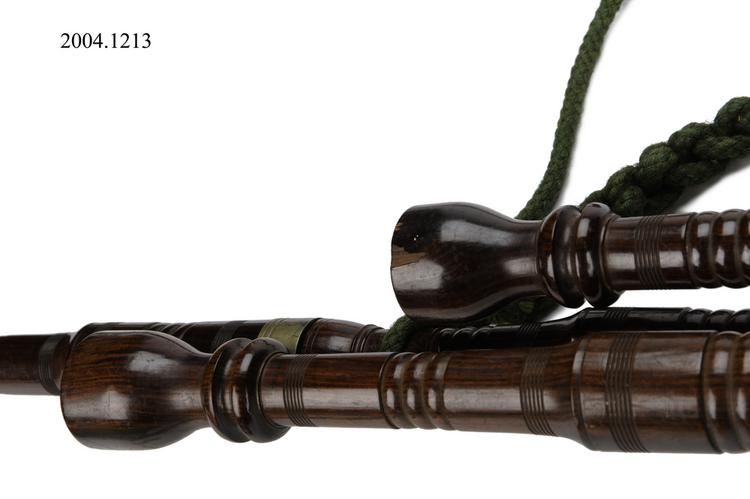
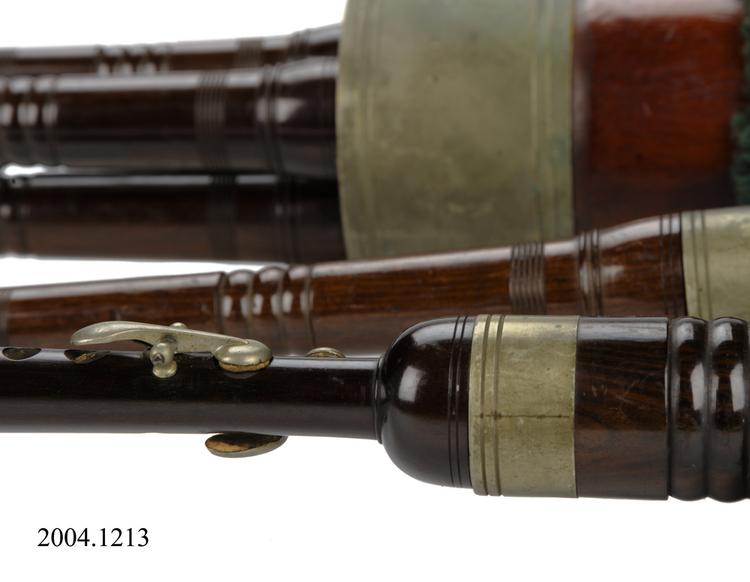
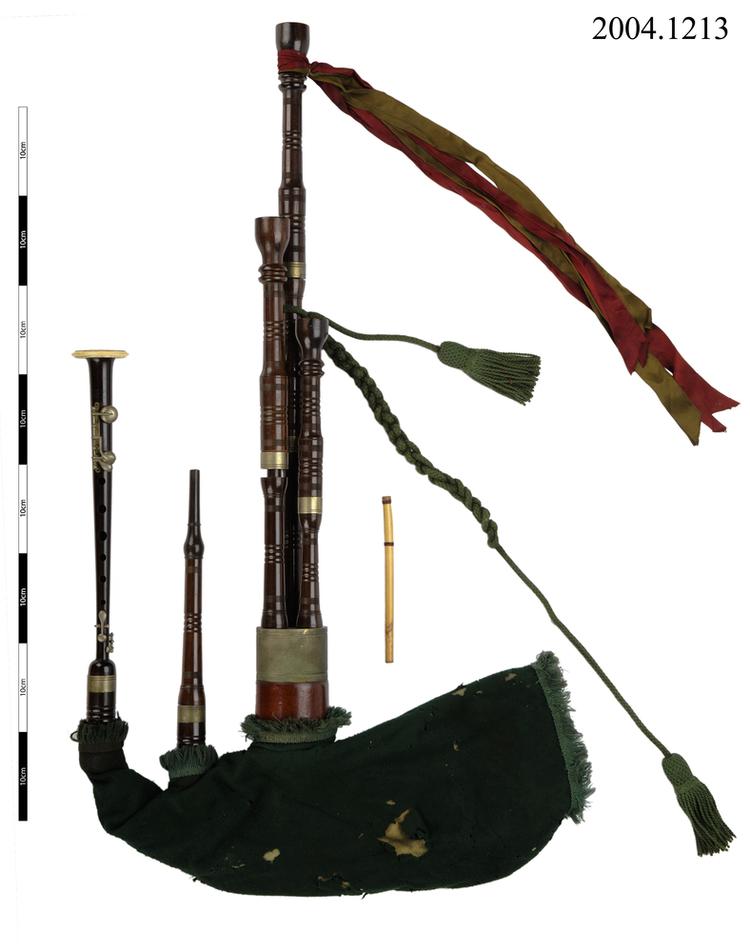
A Brian Boru bagpipe. 1908 patent. Cocuswood blowpipe and chanter with four nickel silver keys (three leather pads). Rosewood drone stock with three jointed cocuswood drones of three different lengths (octaves and fifth). String lapped tenons. Unfinished reed (with lapping but uncut), probably associated with bass drone. Leather inner bag, a canvas intermediate bag and green wool outer bag with fringe trim. Decorative green cord and tassels. Green and red silk ribbon on the bass chanter. Nickel silver plated ferrules and ivory bell disc on end of chanter. Nickel-plated plaque on stock stamped: H.STARCK/MAKER/LONDON; Bell disc on chanter stamped: H.STARCK/LONDON/PATENTEE
Although based in London, Henry Stark was an important figure in the development of the Irish bagpipes. In the early 20th century, there was a revival of interest in the 'Irish war-pipe', an outdoor bagpipe used in Ireland until the 18th century. In 1908, Stark patented the 'Brian Boru' bagpipe design, which he named after a 10th century Irish king. Although loosely based on the war-pipe, the new instrument had four key-covered holes added to increase the number of pitches available.



